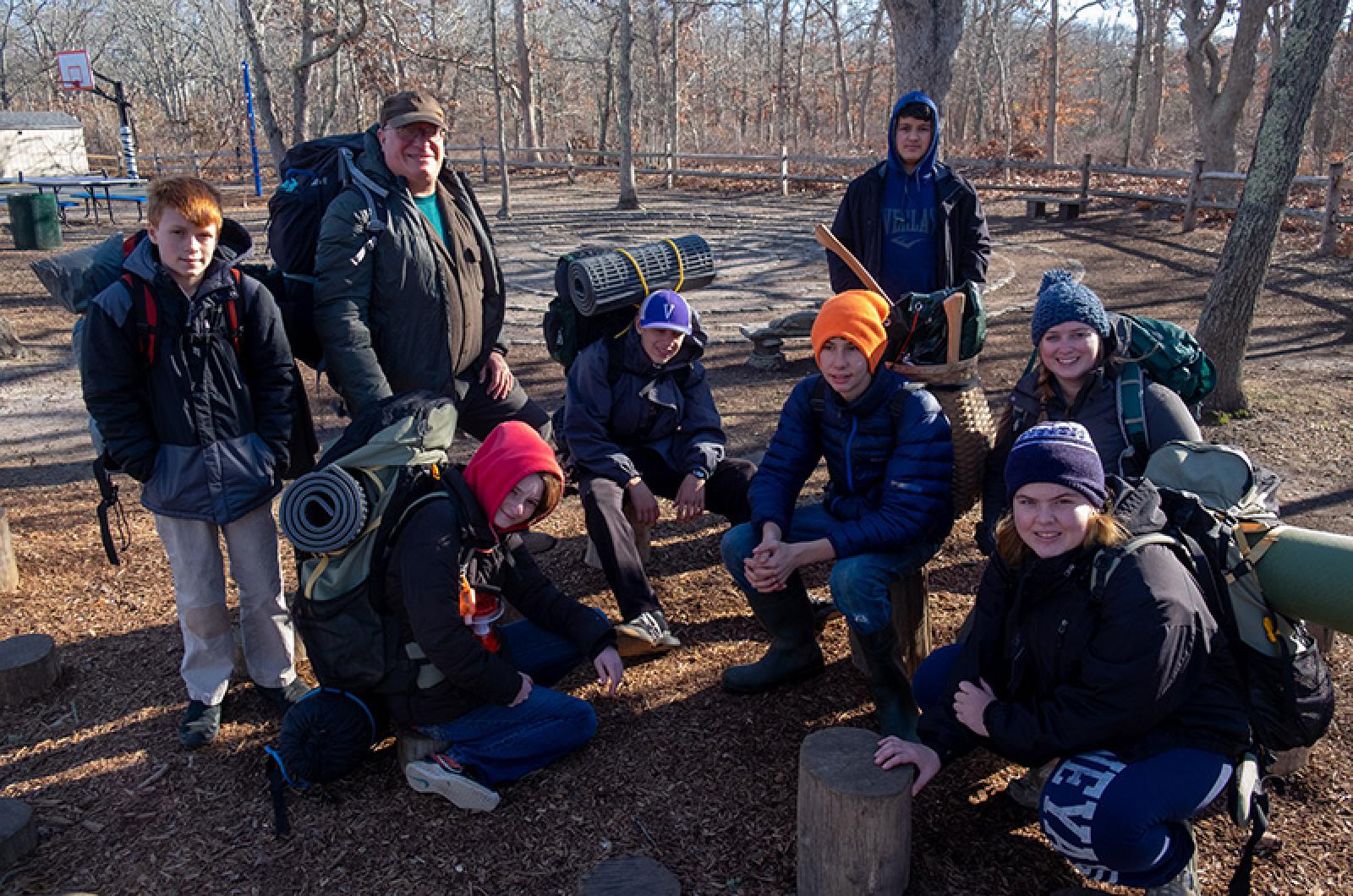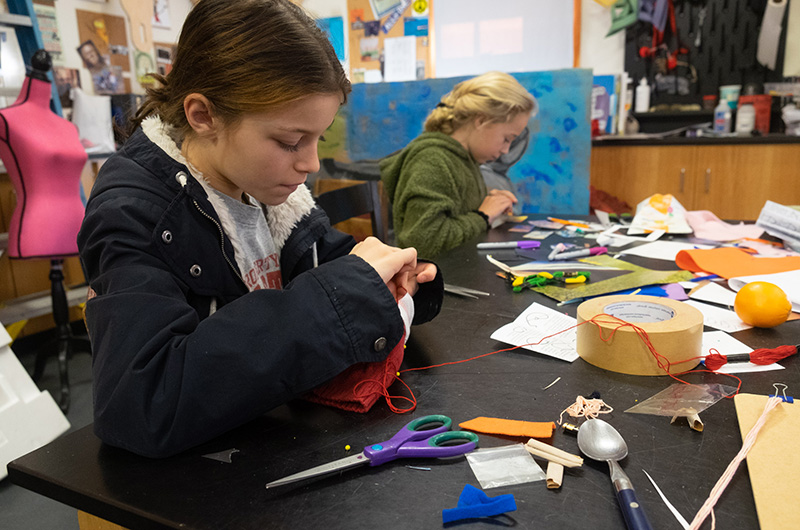On Tuesday, Martha’s Vineyard Public Charter School sixth grader Volkert Kleeman woke up long before dawn to look for worms in his family’s compost pile. By early afternoon, he had donned many layers and a pair of boots, and he and his dad were setting out, rods in hand, for some winter fishing at Fulling Mill Brook in Chilmark.
“I like fishing in the summer and in the fall during the derby,” Volkert said as he followed a tree-lined path. “I thought, why not try winter fishing, since it’s so different.”
Upon reaching the creek, he pulled off a glove with his teeth and put a worm on his hook. It was a school day, but Volkert wouldn’t be marked absent. For two weeks in December and in June, the charter school transforms into a laboratory for student exploration called project period. Whether they are winter fishing, producing hip hop music, sewing or rock-climbing, students are encouraged to try something new and to learn as much as they can from it.
“They don’t have to be an expert, they just have to be interested,” said the school’s new director Pete Steedman. “It’s so remarkable to see this in action because in other schools I’ve worked in, things kind of wind down at the end of the semester. Here, we don’t wind down. We rev up.”
Indeed, outside Mr. Steedman’s office, students in grades five through 12 were engaged in projects and experiential learning, some in groups led by teachers with expertise, but others, like Volkert, worked independently.
In a nearby classroom, the conscious cooking group took a break from cheese-making to reflect on the past week learning about how food is made and where food comes from. The class was led by Sam Greene.
“We saw a deer get its skin pulled off with a winch!” said eighth grader Nathaniel Weisman.
The other students quickly supplied more context, eagerly describing their visit to Brian Athearn’s farm, touring the walk-in refrigerator, learning about what kind of gear is used for hunting, how deer are skinned and how venison is prepared.
The students gestured to a world map, dotted with markers indicating the origins of foods they eat.
“We took iconic foods, and we are tracing them back to the origins of every ingredient,” Ms. Greene said.
Meanwhile, in the school bathroom, eighth graders Matti-Lyn Floyd and Maria Andrade were finishing up a series of murals on the walls of each stall. One showed the scene at the bottom of an undersea canyon, another was a field of sunflowers. The painters said they conceived of the independent study project in response to a vandalism problem.
“If we put up art like this, nobody is going to want to vandalize over it,” Matti-Lyn said. “We know everybody, and nobody’s going to want to write over what we made.”
In Isabella Morais’s course, In the Business of Making Change, students sat diligently typing on laptops, putting together business plans. The course focuses on entrepreneurial ventures centered around making the world a better place. Violet MacPhail, 12, was designing a volunteer run local food exchange program.
“A lot of times local and organic food can be more expensive than processed food,” she said. “The business is directed toward people who don’t have money to spare.”
Maya Tomkins was proposing an app to help cope with anxiety called Pinxiety. The app would feature calming photos and guided meditations. “I wanted to help people not feel so stressed,” Maya said.
In Deborah Cutrer’s and Kim O’Callaghan’s modeling project period, students worked with a 3D printer, made weight-bearing newspaper furniture, and helped the kindergartners make miniature helicopters.
Sixth grader Morgan Caruso sculpted clay around a metal frame. “I was going to make a guinea pig, but now it’s a taco dinosaur,” she explained.
The taco dinosaur was one of the many discoveries made during these two weeks. Some students learned new artforms, others new skills, and others embraced the world around them.
Back at Fulling Mill Brook, Volkert sat cross-legged on a lichen-covered stone trying to keep his line from getting tangled in the bare branches above.
“It’s just you and nature and it’s pretty quiet,” he mused. “You get to see the beauty of it.”








Comments
Comment policy »